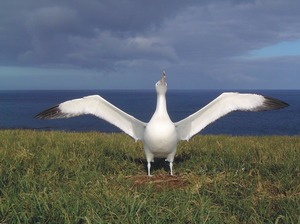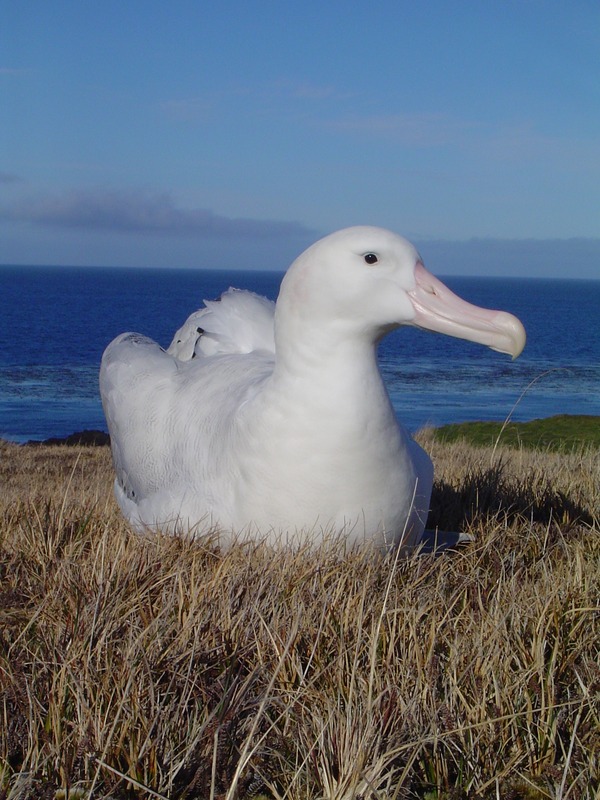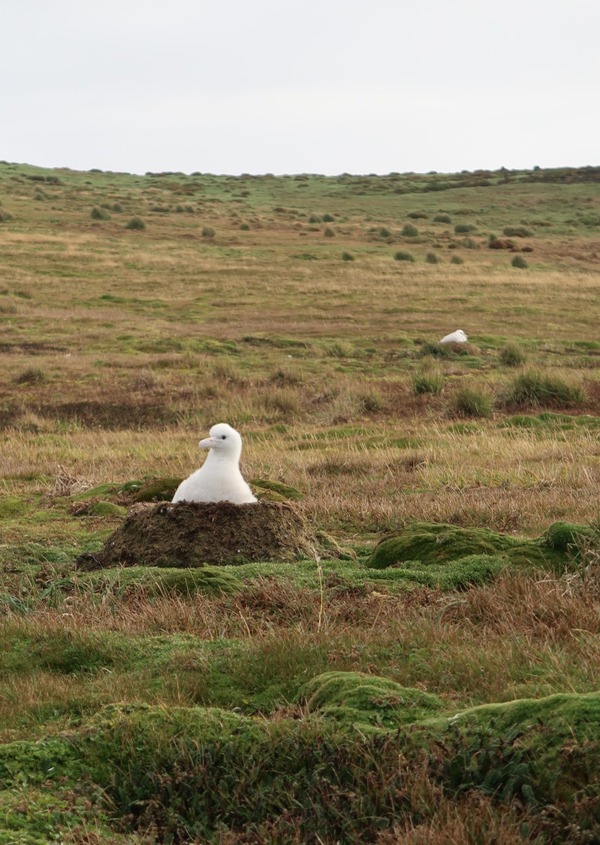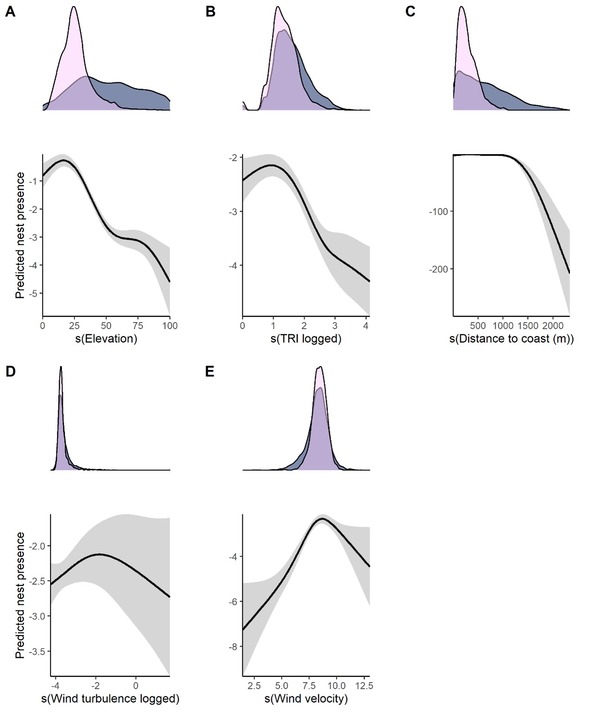 LINKED PAPER
LINKED PAPER
Factors determining nest-site selection of surface-nesting seabirds: a case study on the world’s largest pelagic bird, the Wandering Albatross (Diomedea exulans). Momberg, M., Ryan, P.G., Hedding, D.W., Schoombie, J., Goddard, K.A., Craig, K.J. & le Roux, P.C. 2022 Ibis. doi: 10.1111/ibi.13111 VIEW
The Wandering Albatross (Diomedea exulans) is the world’s largest pelagic bird, inspiring awe in everyone who has had the privilege to see one, and maintaining a spot high on the list of must-see birds for those that have not. Given their large wingspan, these birds have particular requirements for take-off and landing, where they face into the prevailing winds to achieve adequate lift or use it to break their speed upon landing (Warham, 1977). Nest-site selection patterns in birds have been linked to a number of factors, including environmental conditions, resource availability, predator avoidance, and social interactions (Jones 2001). Due to the Wandering Albatross’ strong connection to wind conditions in their flight patterns, foraging behaviour, and breeding success (Weimerskirch et al. 2012, Cornioley et al. 2016, Pardo et al. 2017), our study sought to investigate whether their nest-site selection patterns are also influenced by this same environmental driver.

Figure 1 Wandering Albatross © David W. Hedding .
Using nest locations of the entire breeding population of Wandering Albatross on Marion Island across three breeding seasons, we tested whether wind conditions predict nest site location, in addition to several topographical variables, vegetation and geological characteristics.
The occurrence of Wandering Albatross nests was significantly affected by wind speed, but not by wind turbulence. Nests were found in areas of intermediate wind speeds. Not too little, not too much, but just right. This likely reflects their requirements of adequate wind speeds for flight, but avoidance of the most extreme wind speeds to protect chicks from getting too cold and prevent them from blowing off the surface nests.

Figure 2 Wandering Albatross chick on nest © Mia Momberg.
Several other factors also had a significant impact on the occurrence of nests. Elevation and the distance to the coast were the two most important predictors of nest location. Nests were only found below 100 m above sea level, with a higher probability of encountering a nest nearer to the coast, where temperatures are warmer and suitable habitat is more prevalent. Vegetation type also had a strong impact on where nests were found, with nests occurring on the vegetation types also limited to lower altitudes.

Figure 3 Response curves from the Generalised Additive Model of nest presence/absence in relation to predictor variables. Density plots above the response curves indicate the distribution of data for sites where nests were present in pink and where nests were absent in blue. TRI = terrain ruggedness index.
Given the strong impacts of climate on nest-sites, both directly through wind, and indirectly, through the elevation-temperature gradient and vegetation composition, future changes to climate may have large impacts on the availability of suitable nesting locations. Changes to vegetation have already been recorded in the sub-Antarctic and this could have an effect on the vegetation types present in areas, as well as the amount of material available for nest building. Wind speeds have increased globally over the past three decades, and these changes are likely to continue, possibly leading to a reduction in suitable nesting sites, and influencing population growth. These possible changes to available nest sites need to be considered alongside changes to prey distributions and foraging patterns to determine which areas are most critical for conserving Wandering Albatross populations.
References
Cornioley, T., Börger, L., Ozgul, A. & Weimerskirch, H. 2016. Impact of changing wind conditions on foraging and incubation success in male and female wandering albatrosses. Journal of Animal Ecology 85: 1318-1327. VIEW
Jones, J. 2001. Habitat selection studies in avian ecology: a critical review. Auk 118: 557-562 VIEW
Pardo, D., Forcada, J., Wood, A.G., Tuck, G.N., Ireland, L., Pradel, R., Croxall, J.P. & Phillips, R.A. 2017. Additive effects of climate and fisheries drive ongoing declines in multiple albatross species. Proceedings of the National Academy of Sciences 114: e10829-e10837 VIEW
Warham, J. 1977. Wing loadings, wing shapes, and flight capabilities of Procellariiformes. New Zealand Journal of Zoology 4: 73-83 VIEW
Weimerskirch, H., Louzao, M., de Grissac, S. & Delord, K. 2012. Changes in wind pattern alter albatross distribution and life-history traits. Science 335: 211-214 VIEW
Image credit
Top right: Wandering Albatross Diomedea exulans © David W. Hedding.
If you want to write about your research in #theBOUblog, then please see here.




